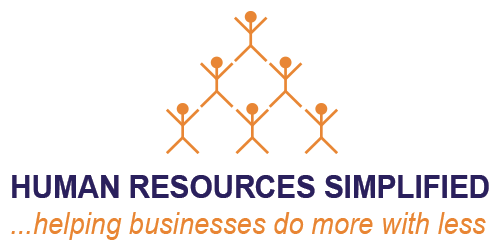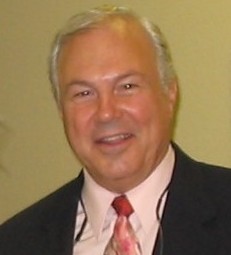
Q: Organizational culture seems like a fuzzy term; we know it when we experience it but how is it formally defined?
A: In the conceptual model that I use, organizational culture is defined by four aspects that all work together to mutually reinforce each other. This self-reinforcing aspect makes for clear, powerful information and action processes to guide employee behavior in productive ways. The purpose of a managed organization culture is to create a competitive advantage by ensuring that all employees have an opportunity to become role models – heroes or heroines of the company.
Q: So, every workplace has a culture, either by accidental creation or by design?
A: Yes. The four aspects of the organizational culture conceptual model that I use are:
- Core Values – these are the five to seven qualities that the organization desires to be known for and known by. Core means “non-negotiable.” If there are too many, it is too difficult to keep them in mind. These values can creep into an organization by accident, or they can be carefully selected, ideally by an inclusive process involving a number of employees. This selection process, in itself, can be an exciting way to help a larger employee base become “owners” of the values.
- Reminders and Rituals – This aspect involves developing a comprehensive way, using many different communication channels, to keep the core values current and at the forefront of employees thinking and awareness of exactly what it is the company stands for and desires to display, internally and externally.
- Desired Behaviors, Rewards, and Recognition – This aspect is one in which a number of specific observable behaviors are identified that illustrate how employees can translate the abstract core values from Item 1 into actions. It is also the aspect where those who engage in these behaviors are held up as role models for the rest of the organization and given visible, tangible rewards and recognition.
- Contaminating Behaviors, Negative Reinforcement, and Removal – This aspect (often one that management seems reluctant to enforce) is the way that contaminating behaviors are minimized and/or eliminated from the organization. It is also one in which specific observable behaviors are identified that would ultimately poison the culture if they were not dealt with. The sequence of management actions typically starts with a verbal warning, then a written warning, then probation, and finally removal from the organization.
Q: What should leadership do to create and encourage the most positive and productive culture that matches their mission and goals?
A: One is to ensure that the four aspects above are self-reinforcing – there is no ambiguity and each of the four aspects receive a consistent and predictable application. Another is to ensure that all members of the leadership team visibly hold themselves to the same standards they expect of the rest of the organization – no exemptions and no exceptions.
Q: Is there a science to this? Who are the psychologists and researchers that are studied this?
A: The concept of managing a four-element process successfully comes from a book, “Systematics” by Saul Kuchinsky. The specific model I learned was developed by an organizational consultant who worked in a number of large multi-national corporations.
Q: What has been your work experience in this area? What conclusions have you drawn from the clients you have worked with?
A: I have been using this organizational culture model in my consulting work for over 30 years. It is one of the most productive and powerful tools I have introduced to companies that were convinced that there must be some simple and effective way to manage their culture in an inclusionary way that engaged a number of employees in helping to develop the work culture they would be proud to work in. Some of the things I have concluded are:
- Keeping the number of core values small is a challenge. It is so easy to decide to have twenty-five or more values – which typically means they are only espoused values – not really ones that are non-negotiable.
- Engaging larger numbers of people in the development of the core value set pays off the most – but it is messy and time-consuming.
- Deciding how to keep the reminders going over time is a key element of success. I have heard employees say something like, “They told me these values were important the first day I was hired, but then no one ever mentioned it again.”
- Having a number of desired behaviors identified helps employees understand that the organization is not asking for perfection, but is committed to giving employees a number of ways to become known as a role model. A key point is to make sure the behaviors are linked directly to the core values.
- The reward and recognition does not have to be expensive. Some examples are hats, pins, pens, jackets, call-out in a public forum giving an example of what an employee did, a telephone call from the CEO, etc.
- Being willing to take action on unacceptable behavior. Otherwise, employees will conclude that management 1. doesn’t know what I did, 2. doesn’t care what I did, 3. knows/cares, but is afraid to say/do anything…
Q: If you were addressing a group of C-suite executives about this topic, what would you say?
A: If you want a way to drive desirable behaviors all through your organization, this is a powerful way to do it. It will attract more of the kind of employees you want, and it will drive away ones who either don’t want to engage, or will not, or cannot be team players. Having a strong, clear, positive work culture will make your organization more profitable that you ever expected because it engages everyone.
Q: You mentioned values, rituals, rewards and recognition (positive or negative); I am thinking this is a top-down process where all managers have to have buy-in of the core values in order to develop their staff to fit the culture. Tell me more.
A: If this particular model of organizational culture is developed as a top-down process where a small group of leaders decide on the values and the behaviors and just inform everyone about what is expected, then I would not expect near the level of successful implementation that would be possible. When the leaders work on figuring out how to maximize participation in the development of the culture everyone will be working in with a large number of employees, the ownership of the process if multiplied. And my experience says that the end product is quite different in its content the more different hierarchical levels are involved.
Q: We read a lot about certain Fortune 500 companies and their culture, such as Zappos, Google, Facebook, etc. (note to you: feel free to modify my questions or add to). What is their secret?
A: I believe that some of their secrets are: they are highly creative and non-traditional in the list of values they use; they are relentless in implementing all four aspects of their organization’s culture; they make use of lots of technology to keep the values in front of their workforce; they give wide latitude in defining desired behaviors; they celebrate their heroes and heroines every chance they get; and they are more clear and unambiguous in what they expect and what they will not tolerate.
Q: I know that in Human Resources, turnover is costly, can create public relations issues, reduces productivity, impacts morale and so forth. If managing and retaining positive culture is a solution, it seems that this would be a big impact on the bottom line and all stakeholders would take notice. Right?
A: Absolutely. Employees, customers, suppliers, and the community become increasingly aware that this is a unique organization that has figured out a way to take an abstract concept like culture, and turn it into an identity that is the envy of those companies that do not have one.
Q: Since Human Resources is responsible for talent acquisition, employee development and, ultimately, turnover, what advice would you have for HR Professionals as to their role with organizational culture?
A: Get buy-in to implement an organizational culture management process – this one or another one – but get everyone on the same page. HR can often play an important role in designing and facilitating the meetings in which the desired culture is developed and implemented.
Just imagine how much you would like to work for an organization where the values they want to manifest in the world are either not clear, or they change often, or each leader has a different set, and where the senior leadership has no intention of holding themselves to the same values and behaviors they expect of direct reports – where no reminders were present about what it is this organization desires or stands for – where the desired behaviors were never made clear, and reward and recognition seem arbitrary and capricious – and where people seem to get away with engaging in inappropriate or unethical or unsafe practices and no one in management says anything!
Art Emrich is Certified as a Master Practitioner and Trainer of hypnosis and neuro-linguistic programming (NLP) by the four major professional organizations in the US. Have been using hypnosis and NLP to assist clients since 1980. His practice includes medical referral clients who experience distress not relieved by traditional treatment, academic hypnosis for peak performance in study and test-taking, and the mental game of sports success for individual competitors in sports like tennis, baseball, swimming, running and golf. Art can be reached at www.u-solutions.net

Jean (JJ in HR) is a certified senior-level human resources executive/consultant, adjunct professor, management trainer, professional speaker, resume writer, career coach, LinkedIn profile builder, and published author.










